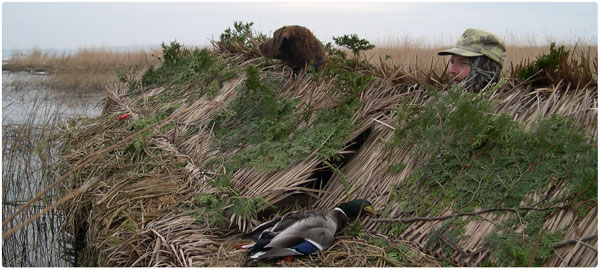
Waterfowl hunters will find some surprisingly good hunting in Vermont.
The best waterfowling occurs in the Champlain Valley, where numerous public wetlands and private farmland provide excellent hunting for ducks and geese. Elsewhere, good waterfowl hunting can also be had in the Northeast Kingdom, on Lake Memphremagog and among its tributary rivers, and along the Connecticut River Valley and the associated oxbows and agricultural fields.
Seasons
Migratory Bird Hunting Conservation Stamps (a.k.a. Duck Stamps)
Waterfowl hunters 16 years of age and over must carry a valid Federal Migratory Bird Hunting and Conservation Stamp and a valid Vermont Migratory Waterfowl Stamp.
- Federal Migratory Bird Hunting and Conservation Stamp is available at US Post Offices and online. learn more...
- Vermont's Migratory Waterfowl Stamp is valid for the calendar year and available when you purchase your license online or at a license agent.
Migratory Bird Harvest Information Program (HIP)
If you are hunting migratory game birds, including ducks, geese, coots, snipe and woodcock, federal law requires you to register with the Migratory Bird Harvest Information Program (HIP).
Waterfowl Hunting Zones
To maximize hunting opportunities, Vermont is divided into three waterfowl hunting zones:
- The Lake Champlain Zone, which includes Lake Champlain and the adjoining Champlain Valley lowlands in Vermont and New York,
- The Connecticut River Zone which includes the Connecticut River and narrow portions of Vermont and New Hampshire and
- The Interior Vermont Zone, which includes the remainder of Vermont.
Controlled Hunts and Other Opportunities
Get your applications for controlled hunts at Mud Creek and Dead Creek WMAs
Tips & Techniques

Ducks - During the October portion of duck season, most hunting is for "puddle ducks" on shallow-water marshes, beaver flows, ponds and rivers. The most common species are mallards, wood ducks, black ducks and greenwing teal.
As the season progresses and marshes begin to freeze in November, open-water hunting for migrating "diving ducks" on Vermont's larger lakes swings into full gear. Goldeneyes, lesser and greater scaup, and buffleheads are the most common diving ducks. Excellent hunting for goldeneyes and late-migrating mallards and black ducks can often be had from mid-November through the close of the season in December.
Geese - Both Canada geese and snow geese are frequently encountered in areas with farm fields that provide food in the form of waste grains and green grasses. Snow goose seasons are liberal, reflecting the record number of snow geese in the Atlantic Flyway. This includes a special Spring hunt.
Canada goose hunting is available during the September resident goose season and again from mid-October through November, when the migratory geese are present.
